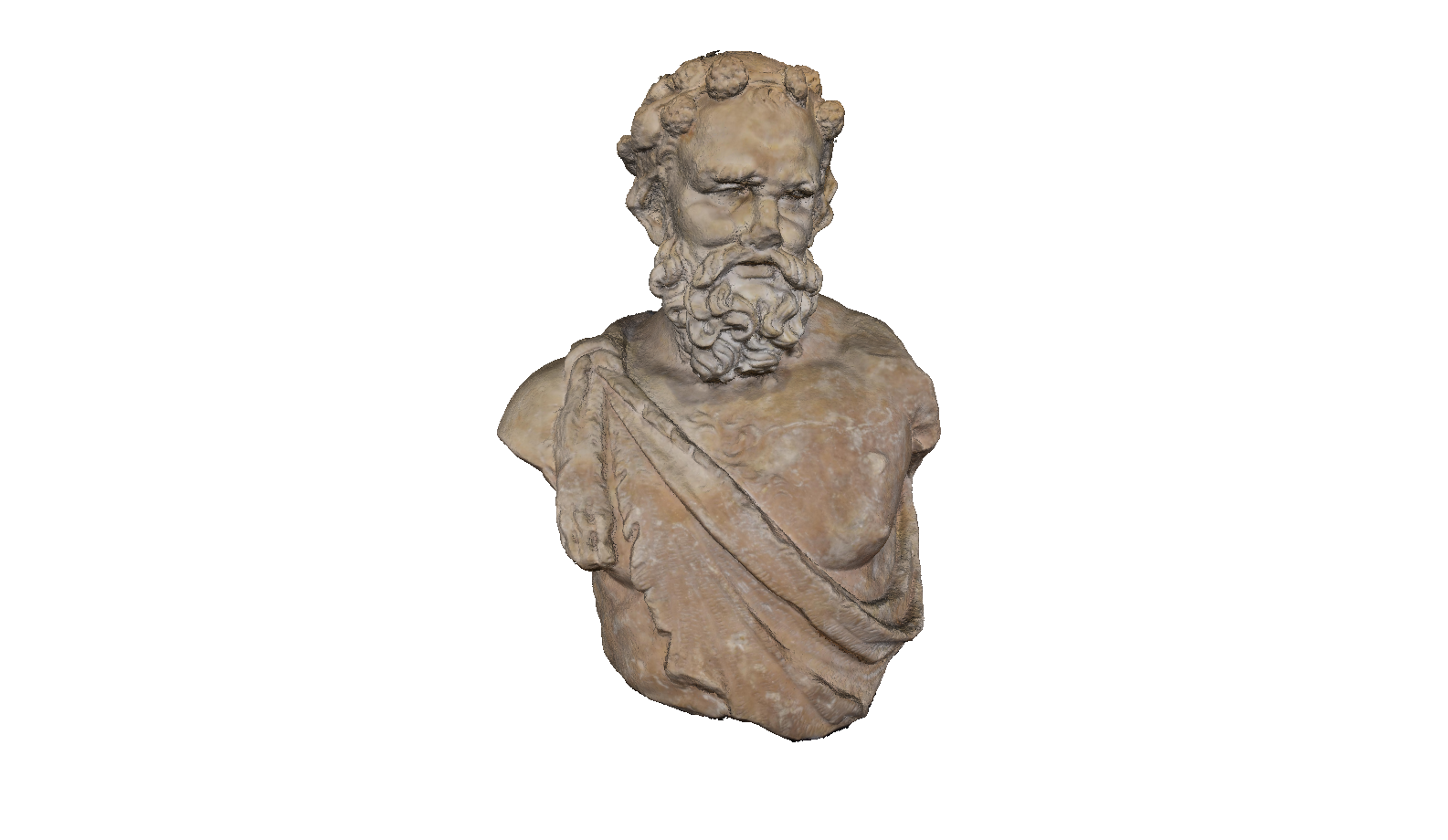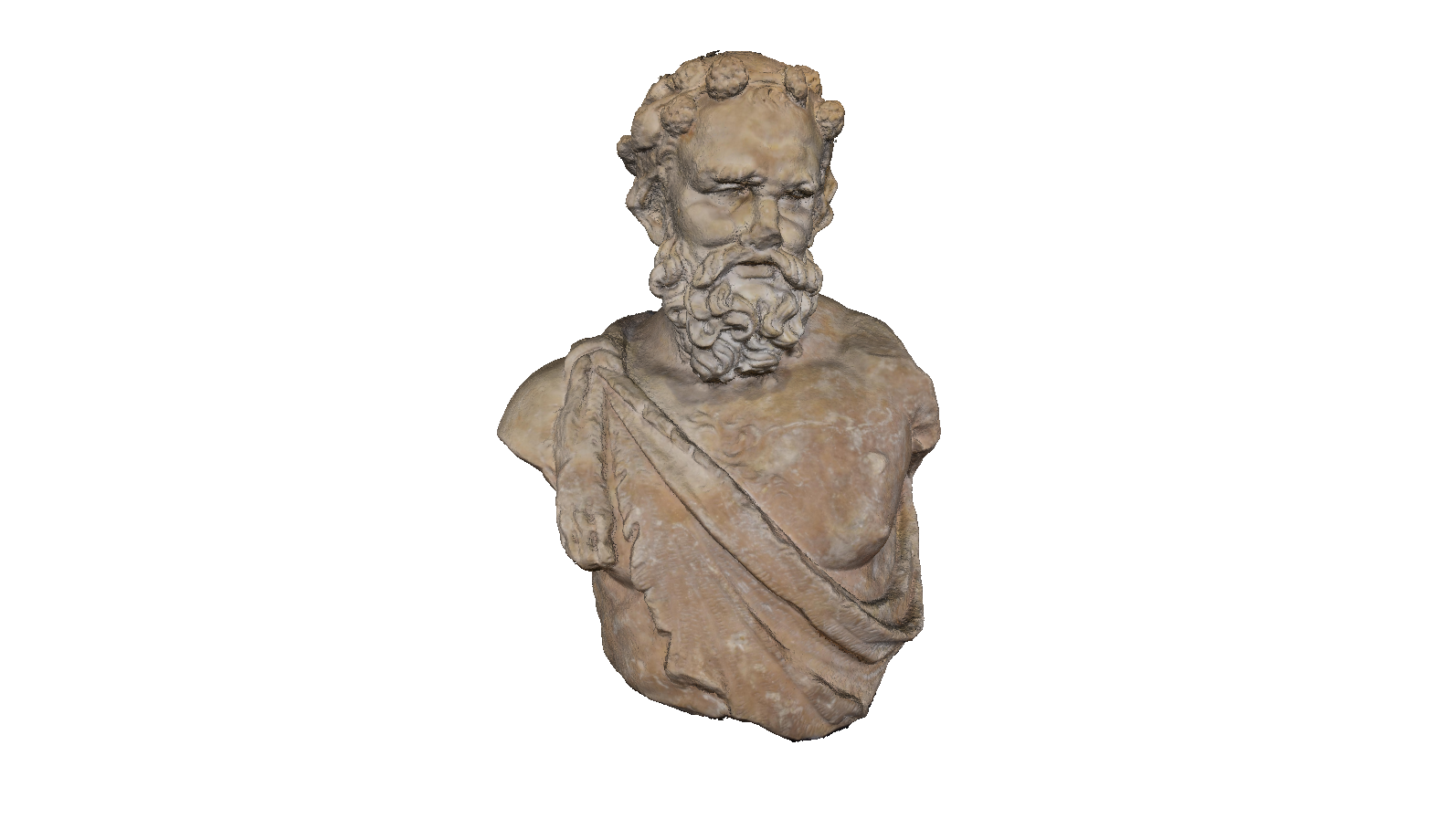Description
Click on the image to go full screen
The marble bust, which is divided into two parts, was found in Padua at different times: the head was discovered in 1924 in Via Cesare Battisti and the rest of the bust in 1981, in Via VIII Febbraio, following renovation work at the Cassa di Risparmio agency. The two elements, perfectly matching, represent an elderly Silenus (or Satyr), a divine creature devoted to Bacchic celebrations. The figure was recognized because of its features and attributes: the feral (pointed) ears, the ivy crown, the hairy chest and the pardàlide - the leopard or panther skin - which is worn like a cape, a typical element of the god Dionysus.
The statue is severely damaged and lacks both the lower part of the body and both arms. The face is directed to the left, and on the chest a trace of a prop can be recognized. For this reason it has been assumed that with the missing arm he was holding something, such as a cup, a jar for serving wine, a bunch of grapes, or the child god Dionysus himself. It has also been thought that the prop was simply a functional attachment to support the arm itself.
This work dates to the second half of the 2nd century A.D. It is a marble copy of a Hellenistic original, probably in bronze. The chronology is based on the technique and tools used, such as the drill, which dates to the Antonine period. For several reasons, this statue has been traced back to a "baroque" type original, a style typical of sculptural artists of the school of Pergamum or Rhodes, Asia Minor, in the 2nd century BCE: because of the plastic and detailed style of the head, the detailed rendering of the beard, the thick eyebrows, the strong facial expressiveness, and the sunken eyes. The subject of the Silenus (or Satyr) became popular precisely in the Hellenistic period, coming to count many variants and artists. It was later revived during the Roman Empire no longer as a reference to Greek mythology, but rather for its scenic and decorative aspect.

